Considering red light therapy? It's a popular, easy way to help your skin, ease pain, and heal faster without drugs. When you're ready to buy your own device, you'll generally pick between panels and wraps.
Panels are bigger, stronger units that stay at home and can treat larger body areas. Wraps are smaller, more portable, and can target specific spots like an ankle or wrist, though they might be less powerful. To quickly see which option might suit you best, take a look at our comparison chart below.
Quick Comparison Chart: Red Light Therapy Panels vs Wraps
| Feature | Red Light Therapy Panels | Red Light Therapy Wraps |
| Design & Structure | Flat, rigid devices with LED grid pattern | Flexible, fabric-based devices that contour to body |
| Size Range | Small (tablet-sized) to large (6+ feet tall) | Body part specific (knee, back, etc.) |
| Coverage Area | Large (1-4+ sq ft) | Small to medium (0.25-1 sq ft) |
| Light Intensity | Higher (20-100+ mW/cm²) | Lower (10-50 mW/cm²) |
| Total Power | 60-300+ watts | 15-60 watts |
| Application Method | Distance-based (6-18 inches away) | Direct skin contact |
| Session Duration | Typically 10-20 minutes | Typically 10-30 minutes |
| Portability | Limited, requires dedicated space | Highly portable, can be used anywhere |
| Power Source | Wall outlet required | Many offer battery/USB options |
| Multitasking | Limited (must remain in position) | High (can continue activities while wearing) |
| Best For Pain | Widespread chronic pain, larger areas | Specific joints, targeted acute pain |
| Best For Skin | Full-face/body treatments, overall rejuvenation | Specific skin concerns in small areas |
| Price Range | Generally higher investment | Generally lower entry point |
| Ideal User | Home-based users with dedicated space | On-the-go users, travelers, busy professionals |
What Are Red Light Therapy Panels and How Do They Work?
What Red Light Therapy Panels Look Like
Red light therapy panels are flat, rectangular devices that house multiple LED bulbs arranged in a grid pattern. These panels range in size from small tabletop units about the size of a tablet to large full-body systems that can stand over six feet tall. This design provides consistent light coverage across larger treatment areas.
Key Light Wavelengths
Quality panels contain LED bulbs that emit specific wavelengths of light proven effective for therapy:
- Red light (typically 630-660nm): Works primarily on the skin's surface and shallow tissue
- Near-infrared light (typically 800-940nm): Penetrates deeper into muscles, joints, and even bone
These particular wavelengths have been selected through scientific research because they most effectively stimulate cellular energy production and support healing processes in the body.
How to Use Panels Properly
Unlike wraps and handheld devices, red light therapy panels deliver therapy from a distance rather than through direct contact. Most manufacturers recommend:
- Positioning yourself 6 inches away from the panel
- Allowing the light to spread evenly across your body
- Sessions typically lasting 10-20 minutes
This distance-based approach helps the light waves properly mix and overlap for optimal coverage.
Power and Effectiveness
The strength of red light therapy panels is measured in irradiance (mW/cm²), which typically ranges from 20-100+ mW/cm² depending on the model and your distance from it. This higher power output allows panels to deliver effective treatments in relatively short sessions. Many panel systems are modular, letting you add additional panels over time to increase your treatment area.
Space Requirements
Red light therapy panels come in various sizes, each requiring different amounts of space in your home (sizes vary by brand):
- Portable panels (typically around 11" x 6"): Can fit on a bathroom counter or bedside table - similar to the space needed for a tablet.
- Medium-sized panels (commonly about 13" x 9"): Need about the same space as a small laptop - works well on a desk or mounted to a bathroom wall.
- Large panels (often around 21" x 14"): Require space comparable to a medium-sized computer monitor - you'll want a sturdy table or wall mount.
- Half-body panels (approximately 20" x 8"): Need wall space similar to hanging a medicine cabinet or small mirror.
- Full-body systems (usually about 36" x 13"): Demand significant floor space - comparable to a narrow floor mirror or small exercise equipment.
Remember that all panels need to be plugged in during use, so you'll need to place them near outlets. Many users find the space worthwhile since panels can treat larger areas like your entire face, back, or multiple limbs in one session.
What Are Red Light Therapy Wraps and How Do They Work?
Red light therapy wraps are flexible, fabric-covered units with LED bulbs embedded in them that bend and adapt to different areas of your body. Unlike the rigid panel style, wraps are designed to be in direct contact with your skin, shaping to curved and irregular surfaces. Most red light therapy wraps are shaped to accommodate common treatment areas like knees, shoulders, or back, with some featuring adjustable straps or Velcro closures to secure them in place.
Light Wavelengths in Wraps
Like panels, red light therapy wraps emit light in specific wavelengths:
- Red light (typically around 660nm): Targets skin cells and surface tissues
- Near-infrared light (typically around 940nm): Penetrates deeper to reach muscles, joints, and connective tissues
The majority of red light therapy wraps utilize both wavelengths to provide surface-to-deep tissue treatment within a single device. The LED bulbs are typically positioned to encourage even coverage of the treatment area.
Direct Contact Application
The key advantage of wraps is their direct skin contact, which:
- Minimizes light loss through reflection
- Ensures the light energy reaches its intended target
- Allows for hands-free treatment of specific body parts
Most wraps are designed to be worn for 10-30 minutes per session, often while you continue with other activities like reading, working, or watching TV.
Power Considerations
Red light therapy wraps have less overall power output than large panels, usually 10-60 mW/cm². However, their direct application on the skin makes up for this difference by reducing light scatter and reflection. Red light therapy wraps are mostly powered by:
- Standard electrical outlets through adapters
- Rechargeable batteries for cordless use
- USB connections for versatile charging options
Portability and Convenience
The standout feature of red light therapy wraps is their portability and convenience:
- Lightweight and easy to transport
- Can be used at home, work, or while traveling
- Many battery-powered models offer true on-the-go treatment
- Compact enough to store in a drawer or bag when not in use
This portability makes red light therapy wraps particularly valuable for busy people who want to incorporate red light therapy into their daily routine without dedicated treatment sessions or for those who need therapy throughout the day, such as for chronic pain management.

How Do Panels and Wraps Compare for Coverage Area?
Red light therapy panels and wraps treat very different amounts of your body at once. Panels shine a broad, uniform light over larger areas (typically 1-4+ square feet), making them perfect for treating your chest, back, face, or multiple body parts in one session. Wraps, on the other hand, cover much smaller areas (about 0.25-1 square foot) but excel at targeting specific spots like knees, elbows, or shoulders because they bend around curves and joints.
Red Light Therapy Panels vs. Wraps Coverage
Your treatment goals should guide your decision between these coverage options. If you're seeking overall skin rejuvenation, general wellness benefits, or treating large areas like back pain, panels offer more comprehensive coverage. If you're targeting specific problem areas like a painful knee, tennis elbow, or a particular skin condition in a limited area, wraps provide more focused therapy exactly where you need it.
| Feature | Red Light Therapy Panels | Red Light Therapy Wraps |
| Coverage Area | Large (typically 1-4+ sq ft) | Small to medium (typically 0.25-1 sq ft) |
| Best For | Full body, multiple body parts, flat surfaces | Specific joints, targeted areas, curved surfaces |
| Ideal Treatment Targets | Back, chest, legs, face, multiple areas simultaneously | Knees, elbows, shoulders, ankles, wrists, neck |
| Coverage Limitations | May have uneven coverage on highly curved areas | Limited to treating one specific area at a time |
| Distance Requirements | Usually 6 inches from body | Direct skin contact |
| Treatment Focus | Broad, whole-body wellness approach | Precise, problem-specific approach |
| Multiple Area Treatment | Can treat several body parts in one session | Typically requires moving the device for multiple areas |
What's the Difference in Light Power and Penetration Between Devices?
Panels typically deliver stronger light (20-100+ mW/cm²) and higher total power (60-300+ watts) compared to wraps, which offer lower irradiance (10-50 mW/cm²) and less total wattage (15-60W). This power difference exists because panels contain more numerous LEDs and stronger components, while wraps sacrifice some power to achieve flexibility and battery operation. Panel advocates argue that this higher power output enables deeper tissue penetration despite some light being lost through reflection and distance.
Wraps compensate for lower power through direct skin contact, which minimizes light reflection and ensures more of the energy reaches its target. The debate about which penetrates better has two sides: panels overcome distance loss with raw power, while wraps maximize efficiency through direct contact. What research actually shows is that proper wavelength (near-infrared 800-940nm for deep tissues) and adequate irradiance (minimum 20-30 mW/cm²) matter more than device type. For similar therapeutic results, higher-powered panels may require shorter sessions than lower-powered wraps to deliver the same light energy dose.
Light Power: Panels vs Wraps
| Feature | Red Light Therapy Panels | Red Light Therapy Wraps |
| Typical Irradiance | 20-100+ mW/cm² | 10-50 mW/cm² |
| Total Power Range | 60-300+ watts | 15-60 watts |
| Power Efficiency | Some light scatter/reflection occurs due to distance | Less light loss due to direct contact |
| Light Delivery Method | Distance-based (6 inches) | Direct skin contact |
| Penetration Approach | Higher power to overcome distance loss | Direct contact to minimize reflection loss |
| Treatment Time for Similar Dose | Potentially shorter due to higher power | May require longer sessions with lower-powered units |
Optimal irradiance and optimal wavelength are more important in terms of effective tissue penetration than whether or not the device is a wrap or panel. Near-infrared wavelengths (800-940nm) for deep tissue penetration (joints, muscles, bone) regardless of device type, and at least an irradiance of some 20-30 mW/cm² on the skin surface is usually the recommended level for maximal therapeutic effect.
The dose of light energy delivered (most commonly called "dose" and measured in joules/cm²) depends on both irradiance and time of treatment. Higher-powered devices can provide the same therapeutic dose in a shorter time. Panels thus will tend to treat with the same effect in less time than lower-powered wraps, even with losses in light with distance.
How Does Wavelength Delivery Affect Treatment Effectiveness?
Red light therapy panels and wraps diffuse light in a different manner, delivering distinctive treatment experiences. Panels diffuse light 6 inches from your body, allowing the different wavelengths space to spread out, overlap, and blend before reaching your skin. This delivers more uniform coverage on flat surfaces like your back or chest, but can deliver less uniform intensity on very curved surfaces where some areas are further from the panel than others.
Red light therapy wraps place light in direct contact with your skin, minimizing reflection loss and transferring more energy to the target site. The fact that wraps make direct contact makes them suitable for irregular surfaces like elbows and knees, where they can remain in continuous contact.
Panel vs Wrap Wavelength Performance
| Feature | Red Light Therapy Panels | Red Light Therapy Wraps |
| Wavelength Mixing | More natural blending of wavelengths | More distinct wavelength patterns |
| Coverage Uniformity | Even on flat surfaces, less uniform on curves | Even on contoured surfaces, may have LED gaps |
| Potential Hotspots | Less likely due to distance diffusion | Possible with some designs due to direct contact |
| Multiple Wavelength Integration | Better blending of different wavelengths | More distinct wavelength zones possible |
Better wraps and panels are made to spread the light evenly around your treatment area - cheaper alternatives might leave hot spots in specific regions and not enough light elsewhere. Wraps are better at addressing specific areas like a painful knee joint, while panels are better for larger areas like your entire back.
Regardless of these differences, research shows that what ultimately counts for your results are: consistency in applying the proper wavelengths of light (the red and near infrared proven to be effective, not just red light alone); providing enough power to your tissues (such as a strong enough flashlight to illuminate a black room); treating for long enough (not too short to be useless, not longer than required); and delivering consistent treatments for weeks and months.

How Do Panels and Wraps Compare for Convenience and Portability?
The practical differences between red light therapy panels and wraps can significantly impact your treatment experience. Panels are larger, stationary devices that require dedicated space and setup time, while wraps are compact, wearable options designed for flexibility. Your lifestyle, available space, and when you plan to use the therapy should guide which option fits better into your routine.
Panel & Wrap Convenience Features
| Feature | Red Light Therapy Panels | Red Light Therapy Wraps |
| Size & Weight | Larger (typically 12"×18" to 36"×72") and heavier (5-50+ lbs) | Compact (sized to specific body parts) and lightweight (typically 0.5-3 lbs) |
| Power Source | Usually require wall outlet connection | Many offer battery power or USB charging options |
| Portability | Generally stationary; difficult to transport | Highly portable; can fit in bags or luggage |
| Setup Time | Requires positioning, distance adjustment | Simple strap-on application |
| Hands-Free Operation | Requires standing/sitting in front of device | Secures to body; allows activity during treatment |
| Travel Compatibility | Impractical for travel use | Many designs travel-friendly |
| Storage Requirements | Needs dedicated storage space | Can fit in drawers or small cabinets |
| Multiple Location Use | Limited to where it can be set up | Can be used virtually anywhere |
| Multitasking Potential | Limited; requires staying in one position | High; can use while working, reading, etc. |
| Treatment Environment | Limited to home or clinical setting | Usable at home, office, gym, or while traveling |
Wraps are clearly better than panels for device portability and lifestyle compatibility, allowing you to receive treatment while multitasking or traveling. Panels and wraps differ significantly in user convenience, with panels excelling at treating larger areas in single sessions while wraps offer superior flexibility for on-the-go treatments and integration into daily activities.
Which Device Works Best for Your Health Goals?
Different red light therapy devices excel at addressing specific health and wellness objectives. Your primary treatment goals should heavily influence your choice between panels and wraps.
Skin Health and Anti-Aging
- Red light therapy panels are better for: Full-face treatments, overall skin rejuvenation, treating larger areas like chest and neck simultaneously
- Red light therapy wraps are better for: Targeting specific skin concerns like crow's feet, neck lines, or localized blemishes
Pain Management
- Red light therapy panels work best for: Widespread chronic pain, back pain covering larger areas, general pain reduction
- Red light therapy wraps work best for: Precise pain targeting in specific joints, acute injuries in small areas, arthritis in particular joints
Muscle Recovery
- Red light therapy panels excel at: Full body recovery after intense workouts, treating multiple muscle groups simultaneously
- Red light therapy wraps excel at: Focused recovery for specific overused muscles, targeting sports-specific recovery areas
Joint Support
- Red light therapy panels offer: General joint health maintenance with broader coverage
- Red light therapy wraps offer: Superior targeted therapy for specific problem joints (knees, elbows, ankles) with contoured application
General Wellness
- Red light therapy panels provide: Whole-body cellular stimulation, overall wellness benefits, general energy improvement
- Red light therapy wraps provide: Targeted support for specific problem areas affecting quality of life
Best Device By Treatment Goal
| Treatment Goal | Better Device Choice | Why |
| Full-body skin rejuvenation | Panels | Treats larger areas in single sessions |
| Targeted joint pain | Wraps | Contours perfectly to joint structure |
| Post-workout muscle recovery | Depends on area size | Panels for multiple muscles, wraps for specific spots |
| Chronic widespread pain | Panels | Provides broad therapeutic coverage |
| Localized acute injury | Wraps | Delivers focused therapy exactly where needed |
| Anti-aging facial treatment | Panels | Covers entire face with uniform exposure |
| Hair growth support | Caps or panels | Consistent scalp coverage required |
| General wellness/energy | Panels | Treats more body systems simultaneously |
For overall skin health focus across larger areas, panels generally outperform wraps with their broader coverage and uniform light distribution. For targeted treatment goals like specific joint pain relief or focused post-workout recovery, wraps typically deliver better results than panels due to their precise application and maintained contact during movement.
Choose the Right Red Light Therapy Device for Your Needs Today
Panels and wraps both have their own benefits - your best bet is based on what matters most to you:
- For treating large surfaces: Choose panels if you want full-body treatment, overall skin improvement, or need to treat multiple areas at once.
- To target a specific pain: Use wraps when you need to address a specific joint, muscle, or skin area with targeted, contoured therapy.
- For a home with dedicated space: Panels would be a good choice if you have permanent space available and adhere to stand/sit sessions.
- For active, busy lifestyles: Wraps are the clear winner if you need portability, want to multitask while receiving treatment, or travel extensively.
- For cost purposes: Start with wraps for specific problems on a low budget; panels are usually pricier but cover larger areas.
- For treatment intensity: Panels have the tendency to supply more power output, whereas wraps deliver maximum performance through direct contact with the skin.
Most severe users sooner or later both use panels for extensive home sessions and wraps for focused treatments wherever. Just be aware that frequent use, as guided, provides the best results, whether you use one of these or not.













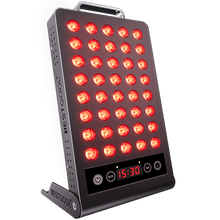
 Small
Small
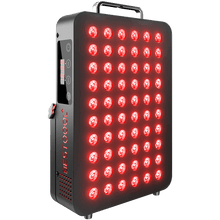
 Moderate
Moderate
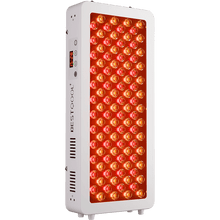
 Moderate
Moderate
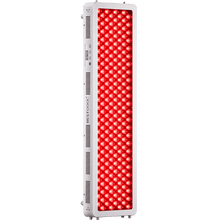
 Moderate
Moderate
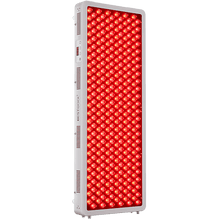
 Full
Full



